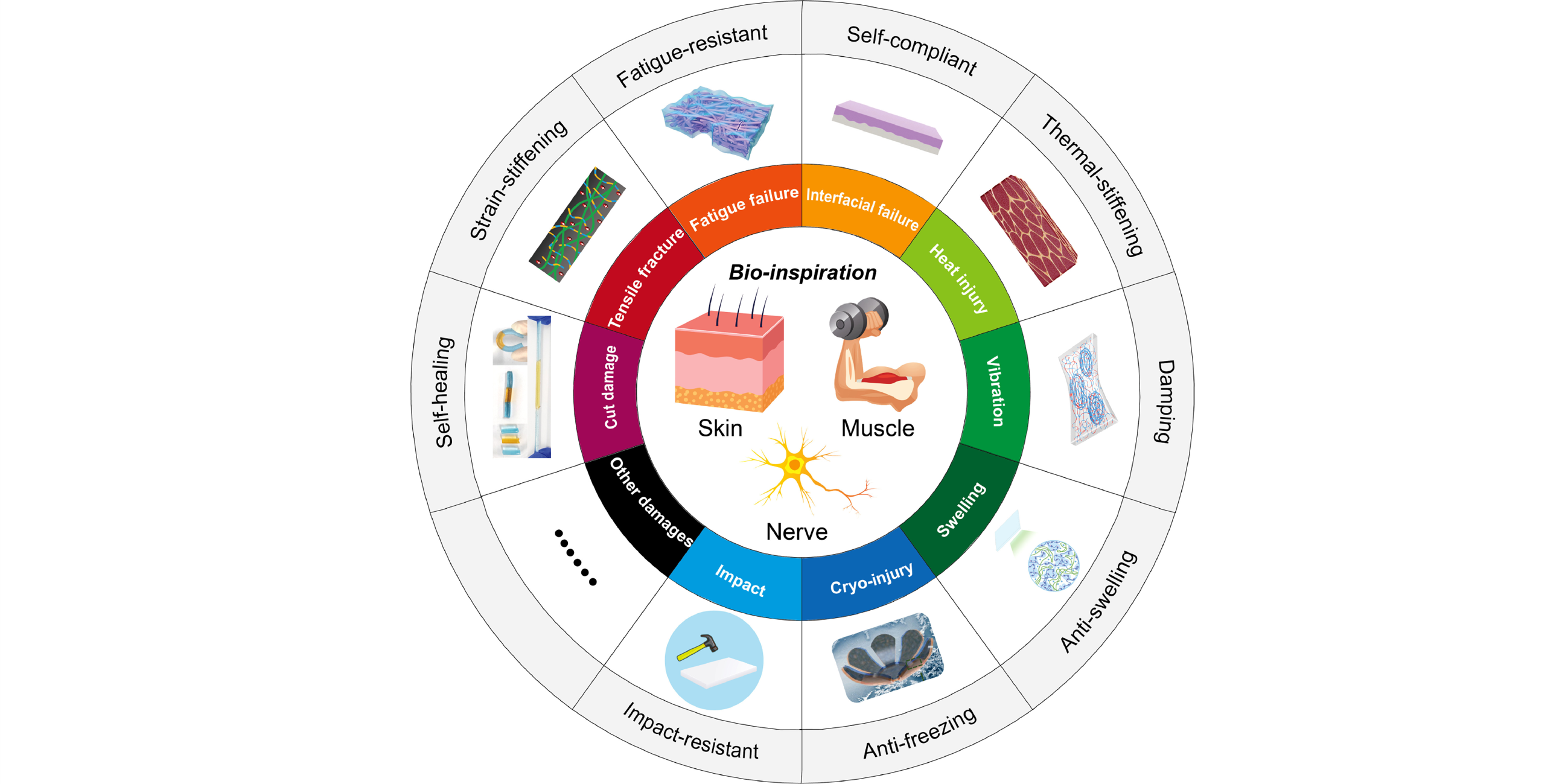Damage-tolerant stretchable ionic conductors
Citation
Qinqing Du, Peiyi Wu*, and Shengtong Sun*. Damage-tolerant stretchable ionic conductors. Fundamental Research 2024, ASAP.
Abatract
Tissue-inspired stretchable ionic conductors hold immense promise as core sensing and signal-transmitting elements for human-machine interfaces and soft robotics. Their inherent stretchability and softness allow seamless integration with human skin and other substrates, enabling real-time electrophysiological signal acquisition or sensitive monitoring of deformation and environmental stimuli. However, this innate softness often renders them susceptible to a range of unpredictable mechanical damages, such as fractures, cuts, tears, fatigue, and impacts. Environmental factors like heat, freezing, swelling, and vibrations can also lead to their gradual mechanical deterioration. These diverse damages may induce permanent structural failures, significantly compromising the materials’ stability and long-term reliability in practical applications. This review categorizes and summarizes the recent strategies for designing damage-tolerant stretchable ionic conductors, emphasizing the tunability and evolution of their condensed structures toward high damage resistance. We highlight bio-inspired heterogeneous network designs with viscoelastic polymers, which elegantly address the inherent trade-off between softness and damage tolerance. These advancements in mechanical robustness pave the way for developing a new generation of durable soft devices.


